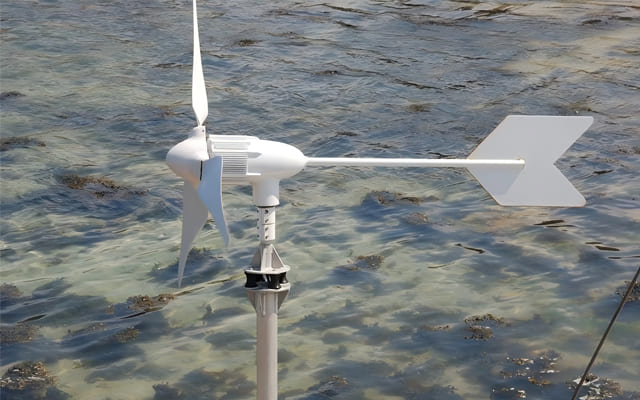Common Faults and Causes of Small Wind Turbines: A Detailed Guide
As renewable energy continues to grow worldwide, small wind turbines have become an increasingly popular choice for rural areas, off-grid systems, and remote locations. Their flexibility and eco-friendliness make them ideal for distributed power generation. However, during operation, small wind turbines may experience some unexpected faults such as severe vibrations, abnormal noises, or steering failures. This article explores common fault symptoms and their root causes to help you troubleshoot efficiently and ensure your system runs smoothly.
1. Severe Vibration of the Wind Turbine
Symptoms:
-
Excessive shaking or wobbling of the wind turbine rotor
-
Noticeable vibrations on the nacelle and tower
-
Loud, abnormal sounds due to resonance
-
In extreme cases, steel wire ropes can come loose, causing damage to the turbine
Causes:
-
Loose foundation bolts at the generator base
-
Deformed or damaged rotor blades caused by wear or storms
-
Loose tail fixing bolts or tail assembly components
-
Slack in tower guy wires reducing overall structural stability
Recommended Actions:
-
Regularly check and tighten all mounting bolts and fasteners
-
Replace or repair any deformed blades promptly
-
Adjust the tension of guy wires to stabilize the tower
-
Maintain the tail assembly to prevent structural looseness
2. Steering System Failure
Symptoms:
-
Small wind turbine fails to turn into the wind properly
-
Unable to respond quickly to changes in wind direction, especially at low wind speeds
-
Long periods of overspeed rotation, risking turbine overload
Possible Causes:
-
Damaged or missing thrust bearing at the top of the turbine tower
-
Accumulation of dirt, mud, or debris causing steering mechanism to jam
-
Improper installation lacking essential overspeed protection components
Solutions:
-
Disassemble the yaw system for thorough cleaning and lubrication
-
Inspect and install missing thrust bearings if necessary
-
Perform regular maintenance to keep the steering mechanism flexible
3. Abnormal Noise During Operation
Symptoms:
-
Audible rubbing, knocking, or scraping noises during normal wind conditions
-
Noise increases with wind speed, potentially affecting turbine longevity
Common Reasons:
-
Loose fasteners such as bolts or spring washers causing vibrations
-
Minor rubbing between the rotor blades and adjacent components
-
Worn or poorly lubricated bearings in the generator
Maintenance Tips:
-
Tighten all screws, bolts, and washers securely
-
Adjust components to eliminate any rubbing points
-
Inspect generator bearings, clean or replace if necessary, and apply fresh grease
4. Maintenance Recommendations: Proactive Checks for Longevity
To minimize unexpected breakdowns and improve reliability, it is crucial to follow a structured maintenance cycle:
-
Maintenance cycle: every six months. During this period, carefully check for rust or corrosion between the horizontal rotor blades and the main hub, and clean as needed.
-
Conduct monthly inspections focusing on the rotor, tower, guy wires, and bearings.
-
Perform biannual maintenance including cleaning rotating parts, replenishing grease, and replacing worn components.
-
Immediately stop operation and inspect upon detecting any abnormal behavior or noise to avoid major damage.
Small wind turbines offer a stable and eco-friendly energy solution, but their performance depends heavily on proper installation and diligent maintenance. By understanding common faults of small wind turbines and applying timely preventative measures, operators can significantly reduce downtime and extend the service life of their turbines.
If you encounter technical difficulties or need professional support, ELEGE New Energy is here to assist you with expert solutions and reliable products.

